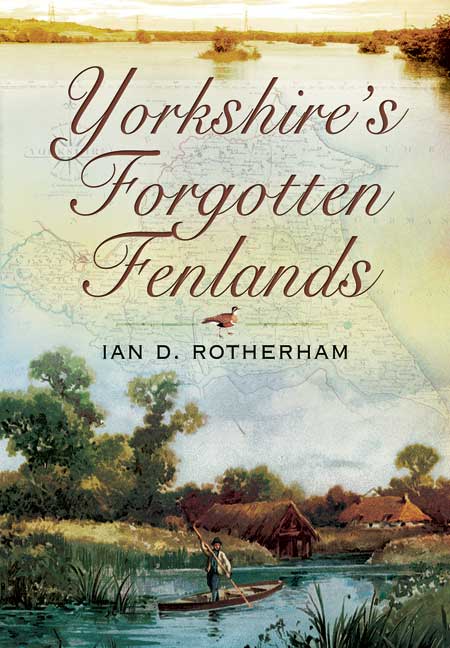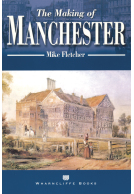Yorkshire's Forgotten Fenlands (ePub)
Imprint: Wharncliffe Books
File Size: 1.4 MB (.epub)
Pages: 176
ISBN: 9781783408702
Published: 22nd November 2010
Yorkshire’ Forgotten Fens’ is a history of the cultural landscape of the wetlands of the Humber basin and the entire county of Yorkshire stretching from the Humber and north Lincolnshire through the Vale of York, through South Yorkshire and Holderness, to Pickering and beyond. The book draws together the story of a changing landscape, the lost cultures and ways of life, and the wildlife that has gone too.
With the final chapter closing on the new wet fenland landscapes which are now emerging and presenting current visions and challenges for these truly evocative of landscapes, this is a book based on our past but with a vision for the future. The book is profusely illustrated with maps, photographs, paintings, and extracts from historic documents.
Ian Rotherham's book initially poses the question 'Whodunnit?' regarding why the 3,000 or so square kilometres of land that had once comprised the Northern Fenlands of Yorkshire has disappeared. Illustrations (including maps, photographs, paintings and extracts from historic documents) abound as the professor expertly takes us on a journey to then attempt to answer that very question, drawing together the story of a changing landscape and, unfortunately, the cultures and wildlife that has been lost forever. He goes on to suggest how we, as a society, may try (and in some cases are trying) to alleviate problems such as wholesale flooding that our civilisation has caused, in its struggle to prosper, during the virtual destruction of the once great Fenlands of Yorkshire over the last 400 years. This book ticks many boxes - interesting, informative and enlightening.
Susan (Customer Review)
Generally speaking, Yorkshire is an area which is not well known for its fenlands, at least not in the same what that Cambridgeshire is. This is because the fenland areas within Yorkshire have been largely lost over the years. Within the book, it is stated that 'the fens were removed, almost without a trace left' . Whilst there is little trace of the fens within the landscape, through his writing, Ian D. Rotherham provides an insight into this forgotten part of the Yorkshire landscape. The book takes in the whole of Yorkshire and the surrounding areas, including the Humber, North Lincolnshire, York, and South Yorkshire. The book provides a comprehensive history of the Yorkshire fens. Rotherham looks at how the landscape of the Yorkshire fenlands was in the past, how it is in the present, and how it may change in the future. As well as looking at the physical landscape of the fenlands, Rotherham also considers the cultural history of the areas under study. Rotherham considers how the population of such areas interacted with their landscape. The book highlights subsequent changes to the landscape, and indicates up-to-date issues relating to the Yorkshire fens. Rotherham's book appeals to a range of readers; the environmental expert and the general reader alike will find this book interesting, informative and illuminating. A well chosen range of illustrations, maps, and photographs complement the text, and add to the vivid picture created by the author. A forward is provided by Professor Melvyn Jones, and Rotherham's own knowledge and experience in the field extends throughout the book. Overall, this book is an excellent source for any reader who wants to learn more about this forgotten aspect of Yorkshire.
Paul V (Customer Review)
The lost world
Yorkshire Post
Landscape detective in search of Yorkshire's vanished fens.
Ian Rotherham digs out a story that runs from before recorded history o the present day.
The author set out to discover the extent and ecology of the once great fenland that covered much of lowland yorkshire.
Doncaster Star
Just in time for those last minute stocking fillers.
I do hope you enjoy it.
Ecologist and landscape historian Ian Rotherham has a new book out, Yorkshires Forgotten Fens.
Sheffield Telegraph
It documents the history of the cultural landscape of the wetlands. This book draws together the story of a changing landscape, the lost cultures and ways of life - the wildlife that has gone too.
It tells a story very much rooted in the past but also contains a vision for the future.
Nowadays it is difficult to imagine the former extent of wetlands in any country because open waters, swamps, marshes, fens and bogs have been drained and much reduced in area as a result of land use change over centuries.
Mires and Peat
This book documents in detail the drainage of the Yorkshire and north Lincolnshire Fens that speeded up from the 14th Century onwards as demand for agricultural land increased, technology developed to make it possible and many Acts of Parliament were passed to overcome problems of land tenure.
This book is well written, easy to read and understand and needs no specialised knowledge to enjoy it.
About Ian D Rotherham
Ian Rotherham discovered York Castle on a childhood trip by steam-train from Sheffield in the 1960s, and has been going back ever since. He is Professor of Environmental Geography and Reader in Tourism & Environmental Change at Sheffield Hallam University; as an ecologist and historian, he is a worldwide authority on landscape history, urban environments, and environmental aspects of conflicts. He has researched and written about York and Yorkshire for many years, campaigning for their conservation, improvement, and wider promotion. Having published over 500 papers, articles, books and book chapters, he has a popular BBC Radio Sheffield ’phone-in and writes for local and regional newspapers, particularly the Sheffield Star, the Sheffield Telegraph, and the Yorkshire Post. His book Yorkshire’s Forgotten Fenlands (Wharncliffe, 2010) is one of several he has written on York and Yorkshire. Ian lectures widely to local groups and works with bodies like the Wildlife Trusts, Natural England, Historic England, English Heritage, the National Trust and the RSPB. A Regional Tourism Ambassador for Sheffield and South Yorkshire, he works on major tourism and conservation projects across the county. He is a Fellow of the York-based PLACE (People, Landscape and the Cultural Environment) research centre.















